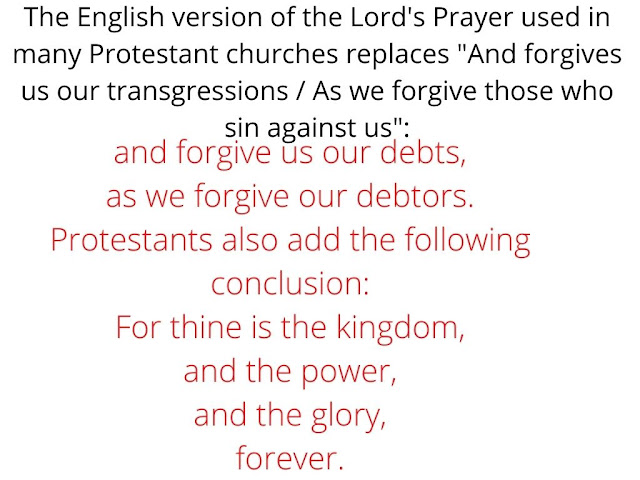God’s Prayer -Christianity
The Lord’s Prayer, also called Our Father, Latin Oracio Dominica or Pater Noster, is a Christian prayer which, according to tradition, was taught by Jesus to his disciples. It appears in two forms in the New Testament: the short version in the Gospel according to Luke 11:2–4 and the longer version, part of the Sermon on the Mount, according to Matthew 6:9–13 in the Gospel. In both contexts it is offered as a model for how to pray.
The Lord’s Prayer is similar to other prayers that emerged from the Jewish matrix of Jesus’ time and includes three common elements of Jewish prayers: praise, petition, and a yearning for the coming kingdom of God.
This closing doxology (short formula of praise) in the Protestant version was probably added in the Christian era, as it occurs in some of the earliest manuscripts of the Gospels.
Biblical scholars differ as to the meaning of Jesus in the Lord’s Prayer. Some see it as “existential”, referring to the representation of human experience on Earth, while others interpret it as eschatological, referring to the kingdom of God to come. The prayer lends itself to both interpretations, and further questions arise from the existence of various translations and the problems inherent in the process of translation. In the case of the word daily bread, for example, the Greek word apsiion, which modifies bread, bears no known resemblance to Greek writing and can mean “for tomorrow”. The plea “give us our daily bread today” may thus be given the eschatological interpretation of “give us today a taste of the heavenly supper to come.” This interpretation is supported by Ethiopic versions and refers to St Jerome’s reading of the “bread of the future” in the lost gospel according to the Hebrews. The eschatological interpretation suggests that the Lord’s Prayer may have been used in a Eucharistic setting in the early Church; In most Christian traditions the prayer is recited before the Eucharist.

